Ready to start your free design?
Take the first step toward your dream kitchen today! We’ll connect you with your personal designer to make your project a reality.
Let’s Get Started
A kitchen remodel can take anywhere from a couple of months to a year or more depending on the size of the project. The steps of a kitchen remodel are similar for many projects, but can vary based on the scale of the renovation.
After completing more than 50,000 projects, we believe following these steps will guide you through a successful kitchen renovation. Some remodelers may experience a few hiccups along the way, but with a plan in place, a beautiful kitchen renovation is possible!
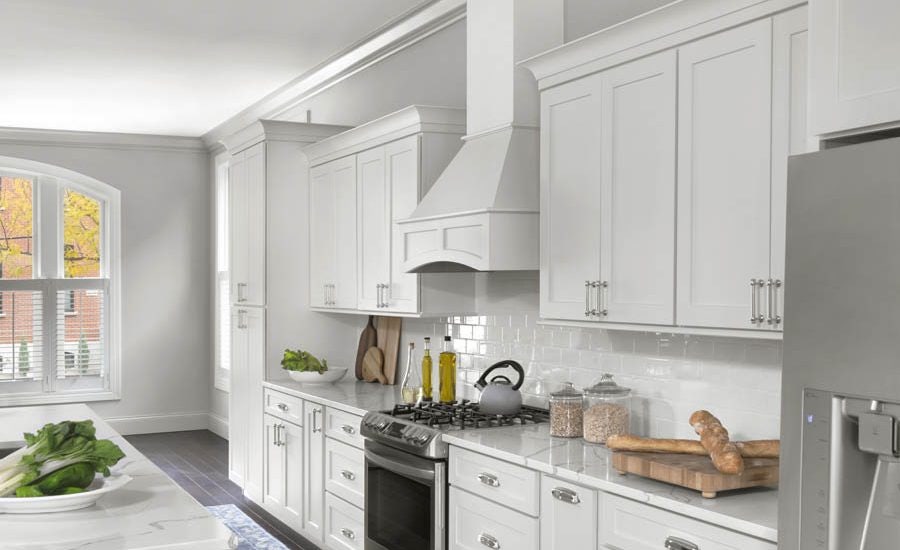


Big choices, like deciding to hire a contractor or doing it yourself, need to be made before starting a project.

Do you know how to start a kitchen remodel? Begin by envisioning your end-goal, your dream. Gather photos and design inspiration. Will you replace cabinets, countertops, flooring, and appliances? Add a second sink or upgrade to a decorative range hood? Move a wall? Dream big, and then ask yourself what's a must-have and what's nice-to-have.
Regardless of the total dollar amount, it’s important to create a budget. Learn what costs to expect and How to set your budget.
Keep your budget flexible by setting aside 10 to 20 percent for unplanned expenses.
If you’re hiring a General Contractor, do your research and set aside time to interview at least three. Start this process early because qualified contractors are often booked 4 to 8 months out.

Planning your kitchen remodel is the foundation for a successful project. It can take anywhere from a few weeks to a few months, depending on when you plan to remodel your kitchen.
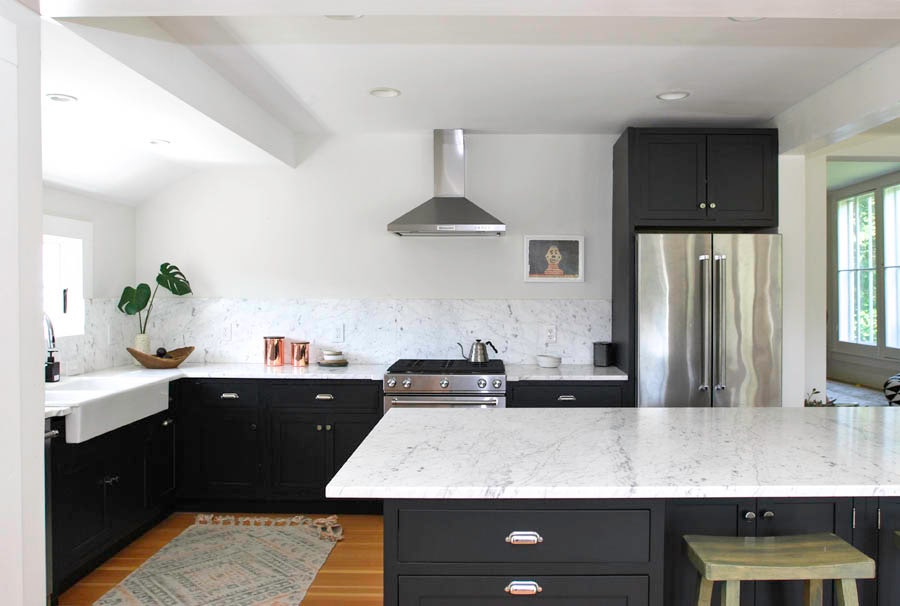
Taking a few simple measurements of your space is all that’s needed to start a free kitchen design. If you’re working with a contractor, they can help collect detailed measurements.
Selecting a cabinet door style and color sets the tone of your kitchen. It also helps you choose countertops, flooring and more. Ordering samples early in the process will give you plenty of time to decide on a favorite.
Talking with a kitchen designer will help you translate your ideas and inspiration into a beautiful and functional kitchen. After discussing your wants, needs, and budget, your designer will create an initial kitchen design which you can revise together until it matches your vision and goals.
A building permit is often required for structural, plumbing, mechanical, and electrical alterations to a house. If you have a contractor, he or she should take care of permitting. This process can take weeks or months depending on the complexity of the project and the municipality, so apply early.
Finalize your kitchen cabinet design, timeline, plans, and contracts. Create your own scope of work detailing who is responsible for each part of the project. Set a date for when the work should be completed. This will help avoid delays and miscommunication.

Shopping for and ordering your products can take several months.
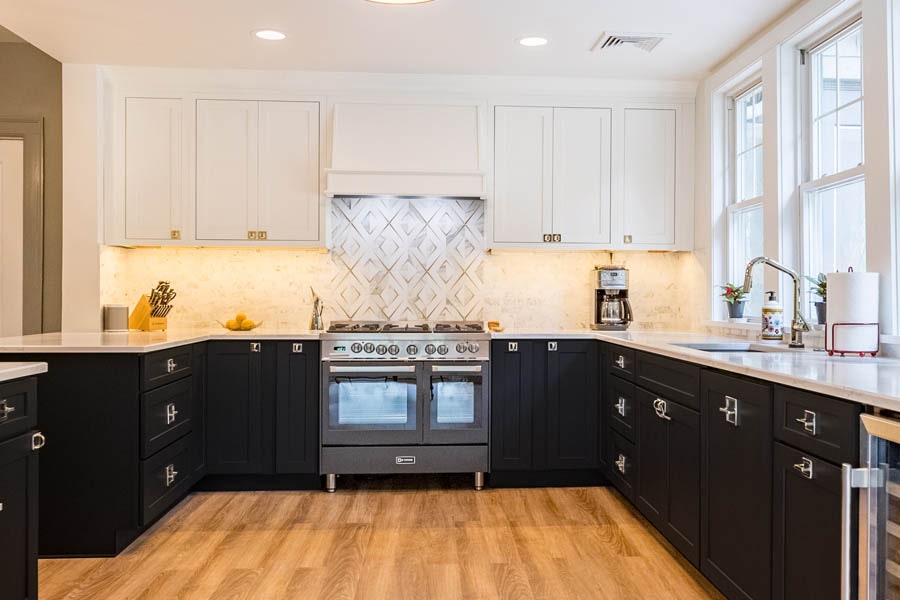
It's best to wait for all your materials to arrive before demolishing any part of your kitchen.
As you choose appliances, keep in mind that their sizes affect cabinets. Communicate any appliance changes with your designer before ordering cabinets to confirm they will fit with your final design.
After finalizing your kitchen design, you will order the cabinets. The lead time for cabinetry will vary depending on the cabinet manufacturer. See lead times for each cabinet line in CliqStudios.
With your cabinet selection complete, it’s time to shop for complementary products. This includes: flooring, hardware, countertops, lighting, sinks, faucets, and more.
Remember that any special order products may require extra delivery time.
Prepare space in a garage or other dry area where you can inspect and store each new product. Many products, like wood cabinets and flooring, will need to be stored in a climate-controlled area.
Before demolishing your current space, establish a temporary kitchen. For some, this may be as simple as a dorm-sized refrigerator and microwave. For others, an outdoor grill is the perfect solution.
You may want to budget extra time and money for eating out more frequently during the rest of the project.
Before the sledgehammers start swinging, you’ll need to pack up everything in your kitchen. If you haven’t already, this would be a good time to declutter your kitchen.
Be sure to leave out items you will need in your temporary kitchen.

Rough construction means demolishing the existing kitchen, building out structural features, and framing the room. If you are keeping the same room footprint and appliance placement, this step could be completed in one week or less.
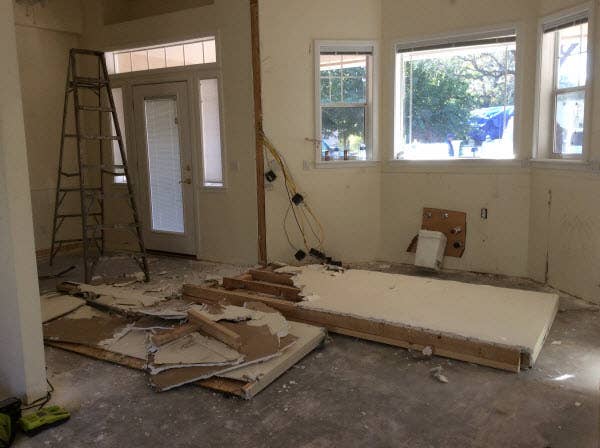
After all new materials arrive and have been inspected, it is time to demolish your current kitchen. If you’re handling the demo yourself, have a plan for how to dispose of waste.
Before you begin demo, confirm that the gas, water, and electric are off in the area you're working in.
Make structural changes like new windows, walls, or doorways. DIYers should consult a professional to ensure that any structural changes, like removing walls, are done safely.
Countertops cannot be fabricated before cabinets are installed. Be sure to schedule the measurements for after cabinets will be installed.
Most utility rough-in work needs to be completed before the drywall and flooring is installed. This gives access to the wiring for inspection and placing outlets, fixture boxes, and switches.
Utilities will need to be approved by a local building inspector before moving on to the next step. This will most likely take one week.
Many types of flooring, like tile and hardwood, should be installed before cabinetry. Some floating floor types, like luxury vinyl flooring and laminates, must be installed after the cabinets.

Finish construction is when all new products are installed in the kitchen. This is the final, and perhaps most satisfying, phase of the kitchen remodeling process.
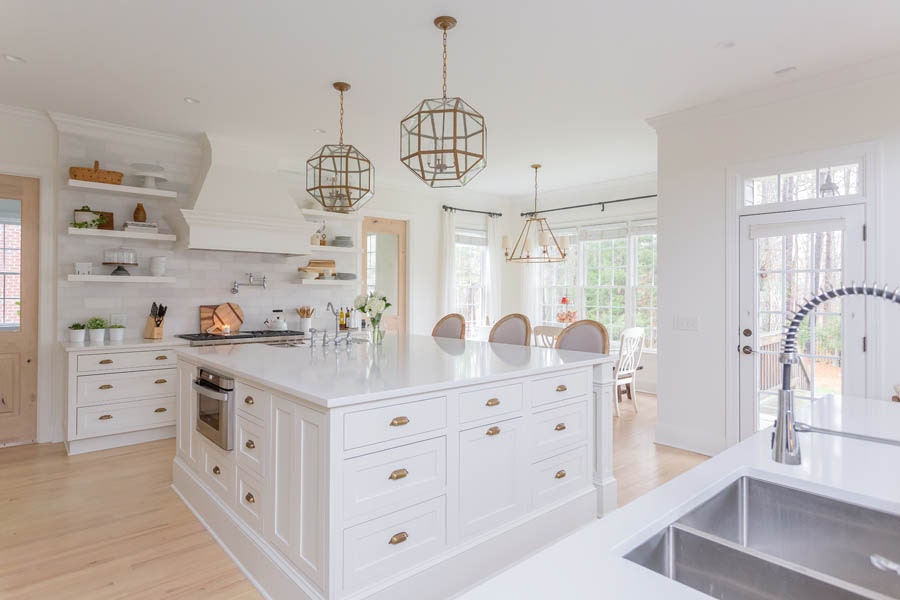
It is time to install the largest part of the kitchen, new cabinets. DIYers can watch our cabinet installation videos for reference.
Only after cabinets are installed can measurements for countertops be taken. Fabrication, or making the countertop, can then take place. This can take up to one month depending on the material. The final step is installation.
Lighting is installed after countertops are added. Appliances and plumbing fixtures can also be installed at this time. Use caution moving heavy appliances so they do not ding or scratch new flooring and cabinets.
The finishing touches of the kitchen include cabinet hardware, crown molding, paint touch-ups, and any other details. Level all appliances and check their connections.
Backsplash is the last major item to be installed. It usually takes two days, but could take longer if you’re creating a detailed design.
If a building permit was required, schedule a final inspection by a building inspector. These take place during business hours.
Cleaning includes: clearing the room and ventilation system of dust and debris, wiping down cabinets, and scheduling haul-away of any garbage dumpsters.

Congratulations, your kitchen is brand-new and fully functional! Unpack your items and find a new home for each one. You’re ready to show off your new kitchen!
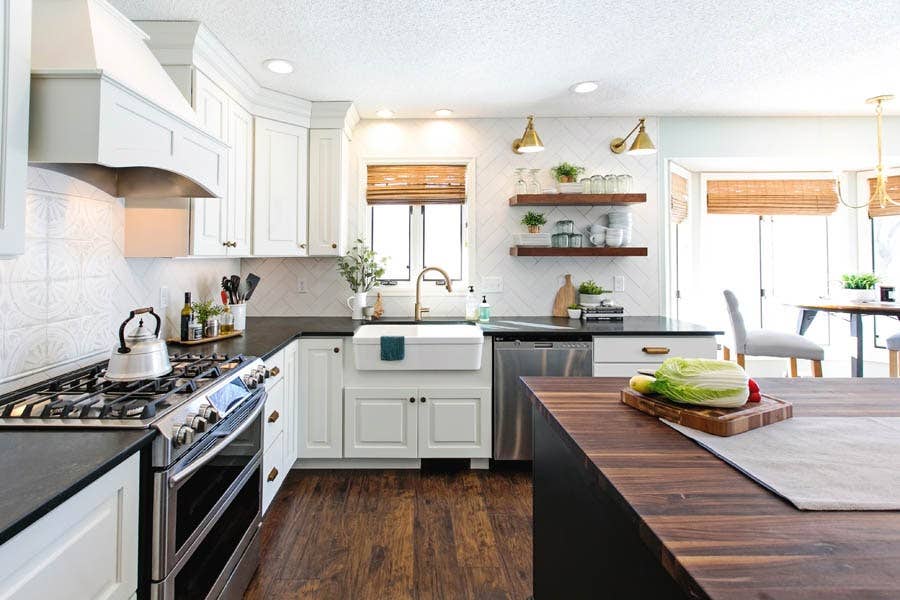
In addition to the kitchen remodeling timeline, designing a kitchen can be complex. Starting with overall design, it’s important to first identify what you want in your new space. Do you need more storage? Are you lacking in counter space? Are there any major shortcomings in your existing layout? Focus on these issues first, then moving on to the next step will be easier.
The next best step is to identify your interior design style. If this doesn’t come naturally to you, explore Pinterest, or talk to a professional CliqStudios designer. Sometimes it’s best to do both. During your conversation with a designer, tell them about the materials you like and what tends to draw your attention. You can even share your favorite pins with them. Once your designer has a solid idea of your tastes, it’s much easier to design your custom kitchen.
Take advantage of CliqStudios’ free kitchen design services. Doing this will easily save you thousands of dollars compared to studio fees, and we offer hundreds of cabinets options in every style and budget. Our designers provide personalized attention and custom designs every time. During this process, your designer will ask you about your storage preferences and dreams for the kitchen. This means you no longer have to worry about all the details. Once appliances are chosen and the kitchen cabinets ship, you're on the way to scheduling installation and countertops.

Take the first step toward your dream kitchen today! We’ll connect you with your personal designer to make your project a reality.
Let’s Get Started
Blessings!